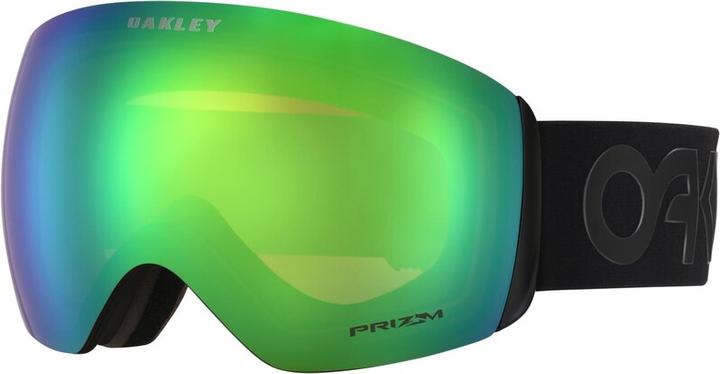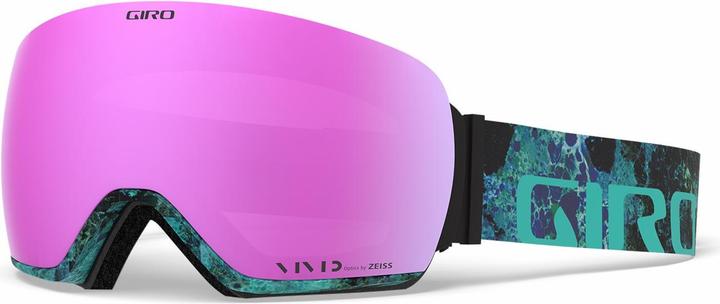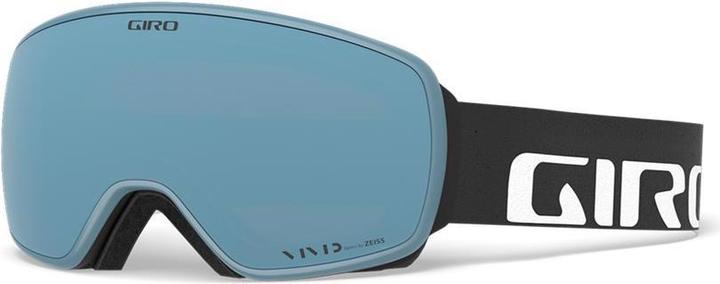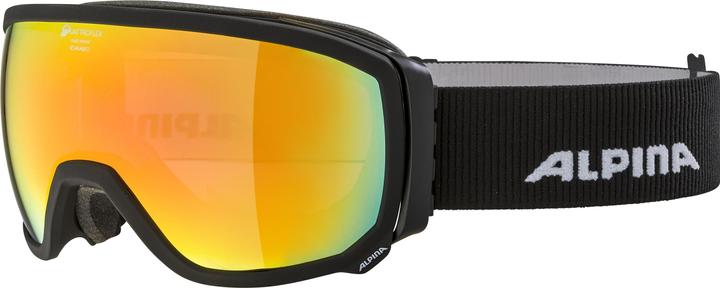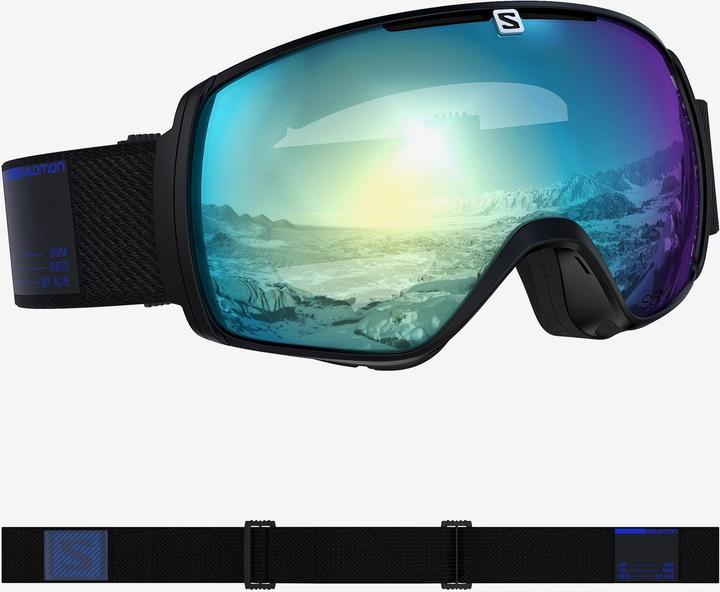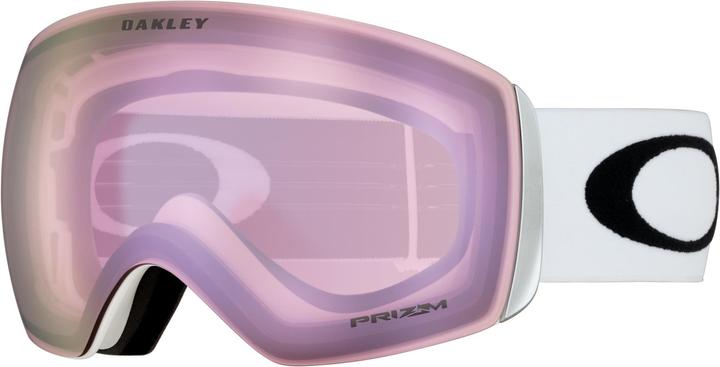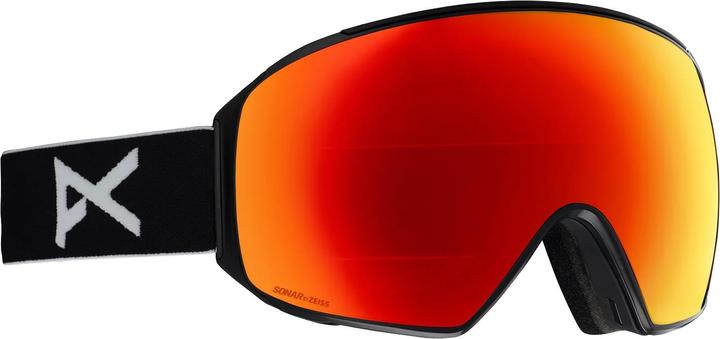

Hey, Goggle: find the right ski goggles
You don't need to google any further, here are the most important aspects on the topic of ski and snowboard goggles. What lenses, tints, fits and interchangeable systems are available? An overview.
Ideally, you won't even notice your ski or snowboard goggles. They are there, fit comfortably and block out anything that could get in the way. You enjoy a perfect view of the piste. But woe betide you if something doesn't fit. Too bright, too dark, too foggy, too narrow a field of vision - goggle problems are not only annoying, they can also be dangerous. Some of them can be avoided if you make conscious decisions about what you put on your nose in which conditions.
The lenses: cylindrical vs. spherical
Cylindrical lenses are mostly used in cheaper models. They are horizontally curved but vertically flat. As if cut from a cylinder, with a classic look like the Anon Helix 2 Sonar Spare. This means they are less effective at absorbing glare than spherical lenses, which are curved in both directions and appear to be cut from a sphere. They offer you a wider field of vision and, thanks to the larger internal volume, better air circulation. This means that your goggles mist up less. Despite these advantages, the spherical look of the Oakley Flight Deck doesn't just have fans.
Light transmission: The different tint levels
Depending on the weather conditions, different lenses are required. So that you as a customer can better assess the tint levels, manufacturers specify the "Visible Light Transmission" (VLT). This value tells you what percentage of light can penetrate the lens. Sometimes you will only find an S value between 0 and 4. Here's how you can interpret this information:
80 to 100% VLT (S0): Barely tinted lenses for dark conditions such as fog, heavy snowfall or floodlights in the evening.
44 to 80% VLT (S1): For similarly dark but more changeable conditions.
18 to 43 % VLT (S2): Changeable weather conditions. Best choice for anyone looking for goggles for as many conditions as possible
8 to 18 % VLT (S3): Bright conditions, predominantly sunshine. Sunglasses weather.
3 to 8% VLT (S4): Very dark lenses for bright rather than bright conditions. For example, in sunshine on the glacier.
There is therefore no such thing as the all-round perfect goggles with one lens for all conditions. The best compromise is a VLT value of around 30 per cent, which should be fine for most weather conditions. Here you can find the all-rounders among our ski and snowboard goggles - you can filter by "light conditions" in the search. However, you are more flexible than with all-round goggles with an interchangeable system.
Retachable systems: click, clip, magnetic
With an interchangeable system, you can react to changing conditions and adjust your glasses in a few simple steps. On some models, the lens is held in place by clips, which may be visually distracting for some people. Or the lens is pressed into the frame until it snaps into place. Click. This is how it works with the Giro Lusi, for example.
With these systems, changing lenses in a warm room is no problem, but definitely no fun with cold fingers on the piste. And the more you have to finger the lens, the more frustrating it is to clean afterwards. It's clear that the manufacturers have come up with a magnetic quick-release system, such as that used in the Giro Agent.
To all glasses with interchangeable system
Coatings: Not all lenses are the same
Why change lenses when one lens can do more? To save you the hassle of unpacking, fitting and packing whenever possible, lenses are being tinkered with and coated to make them as multifunctional as possible. Polarised lenses such as on the Alpina Scarabeo QMM are designed to reduce distracting glare and improve depth perception, which is an advantage on icy slopes. Photochromatic lenses are self-tinting and adapt to a certain degree to the respective visibility conditions. The Salomon XT One Photo Sigma is one such model, which is designed to work from poor visibility to sunshine (S1-S3).
Oakley wants to enable better contrasts with Prizm technology and thus cover a wider spectrum with one lens. The manufacturer explains it like this:
"Prizm™ is a revolution in snow lenses that draws on decades of colour theory research. Prizm™ lenses offer unprecedented control of light transmission. The colours are precisely matched to optimise contrast and improve visibility."
Big words. And smart glasses like the Oakley Flight Deck, which incorporates Prizm technology. Even if it sounds as if Oakley has wrested exclusive secrets from the universe, all manufacturers are of course primarily concerned with one thing with their lenses: filtering the light in such a way that contrasts are optimised and the surroundings can be better perceived. At Giro, for example, the magic word for this is Vivid, the technology was developed together with Zeiss. The lens is designed to allow a higher proportion of blue light to pass through and thus also ensure better contrasts. Smith relies on ChromaPop to send the colour spectrum to your retina in the best possible filtered way.
What's good now? Which is better? What's best? Don't be overwhelmed by marketing gobbledygook, but ask yourself the following questions before buying: What conditions do I need the glasses for? Do I want an interchangeable system? Or a photochromatic lens? If you end up wavering between Prizm, Vivid & Co., a thought about your helmet can also help with the purchase decision. If you go for the same manufacturer, you shouldn't have a problem with the fit of your goggles and helmet. [[image:31880091 "If the goggles and helmet are compatible, the ventilation of the goggles will also work better."]]
Ventilation: Everything is nothing without vision
No matter what technology is in the lenses - as soon as your glasses fog up, the fun is over. To prevent this from happening, it helps if a lot of air can circulate in the glasses. Spherical lenses are an advantage here. In addition, the ventilation system of your helmet should complement the goggles as much as possible and direct the airflow towards the goggles instead of covering their ventilation system. Here too, brand loyalty can pay off and ensure optimum interaction. And then you can specifically look for models with anti-fog coating to combat blurred vision. You can also do your glasses both good and bad with care. So make sure you follow the relevant instructions to prevent damage to the coating.
Glasses with glasses: Over The Glasses
If, like me, you wear glasses on a daily basis, you know the drill: glasses on, glasses off, changing glasses, cleaning glasses and wearing contact lenses during sport until your eyes burn or a lens disappears under your eyelid. If you can't tolerate contact lenses or simply don't like them, there is also a range of ski and snowboard goggles under which you can wear your corrective glasses. The magic word is "OTG", which stands for "Over The Glasses" and means that there is enough space and cut-outs for the temples. You can find all OTG models here - alternatively, you can also look for a helmet with an integrated visor and kill two birds with one stone. Provided the flap is closed. Otherwise it will hit you in the eye.
Sizes: From oversized to Asian
To make sure your ski or snowboard goggles fit, the first step at Galaxus is to search for width, normal and narrow cut models. You will then find further information on the respective fit in the product descriptions. Common terms are oversized fit, medium fit, small fit and Asian fit. Oversized models offer you a huge field of vision, but you also need a helmet with a correspondingly large cut-out for the goggles. Medium-fit glasses are suitable for normal people like me and, quite possibly, for you too. Small-fit models are designed for smaller faces and children, while Asian-fit goggles have a smaller distance between the bridge of the nose and the lens.
Details: Small things with a big effect
Sometimes the devil is in the detail, so it's worth taking a closer look. A silicone-coated strap holds your goggle securely in place. Accessories such as interchangeable lenses need to be stowed away safely and cleaned with a special cloth so that you don't scratch the valuable coatings. So take a close look at the scope of delivery. Sometimes manufacturers think outside the box, such as Anon with the M4 - the goggles come with a facemask, which can be attached magnetically and increases in value the lower the temperatures drop.
Simple writer and dad of two who likes to be on the move, wading through everyday family life. Juggling several balls, I'll occasionally drop one. It could be a ball, or a remark. Or both.
Practical solutions for everyday problems with technology, household hacks and much more.
Show all